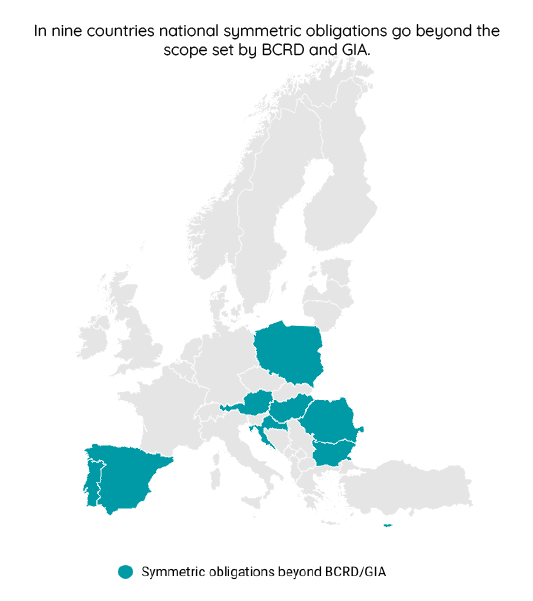The Broadband Cost Reduction Directive (BCRD) regulates access to the physical infrastructure of network operators such as electricity, gas, water, transport, as well as telecoms. The new Gigabit Infrastructure Act (GIA), which will enter into force on 12 November 2025, also covers providers of associated facilities.
In nine European countries the national symmetric obligations go beyond the scope set by BCRD and GIA. Symmetric obligations can apply to any electronic communications network provider, irrespective of market power.

National regulatory authorities (NRAs) may impose asymmetric access obligations for access to ducts and other civil engineering infrastructure (CEI) owned by electronic communications network providers designated as having SMP.
In 22 countries, the NRA imposed access to ducts as part of SMP remedies.
Our new benchmark analyses where regulators imposed asymmetric SMP obligations for access to ducts and where symmetric access obligations go beyond BCRD and GIA.
For more information and access to the benchmark, please click on “Access the full content” - or on “Request Access”, in case you are not subscribed to our European Telecoms service.
more news
19 December 25
CSRD transposition: Belgium, Denmark, Finland and Slovenia transpose the “stop-the-clock” directive
Cullen International’s updated benchmark tracks the progress made by the 27 EU member states in transposing the CSRD and the related “stop-the-clock” directive.
19 December 25
Global trends in AI regulation
Our latest Global Trends benchmark compares policies and regulations on artificial intelligence (AI) across 14 jurisdictions around the world.
19 December 25
Implementation of European Media Freedom Act: general overview in 12 EU member states
Our new Media benchmark shows if there are initiatives/rules in the selected countries which aim to put into application the EU Media Freedom Act (EMFA). If yes, it describes the scope of the main measures proposed. The benchmark also provides information on the next legislative or regulatory steps.